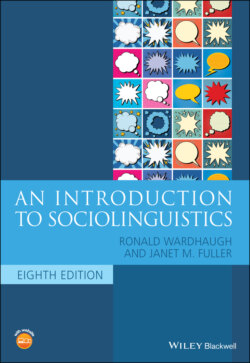Читать книгу An Introduction to Sociolinguistics - Ronald Wardhaugh, Janet M. Fuller - Страница 46
The standard and language change
ОглавлениеStandardization is an ongoing process, for only ‘dead’ languages (i.e., languages that no longer have native speakers) like Latin and Classical Greek do not continue to change and develop. What is considered standard in living languages continues to change. The standardization process is also obviously one that attempts either to reduce or to eliminate diversity and variety. Given that variation is inherent to language, standardization imposes a strain on languages or, if not on the languages themselves, on those who take on the task of standardization. That may be one of the reasons why various national academies have had so many difficulties in their work: they are essentially in a no‐win situation, always trying to ‘fix’ the consequences of changes that they cannot prevent, and continually being compelled to issue new pronouncements on linguistic matters. Unfortunately, those who think you can standardize and ‘fix’ a language for all time are often quite influential in terms of popular attitudes about language. Opinion articles about how social media and technology are ruining language have addressed alternative spellings and the use of emojis as signs of the demise of sophisticated speech as we know it (see links in the companion website), but technology is not the only culprit named. Young people are identified as the problem in every generation (especially but not only because of their social media language use), and Americanisms are also named as the source of the deterioration of English (see for instance Engel 2017). While these articles focus on vocabulary and orthography, of course there are changes on all levels of language (see discussion of variation in chapter 1).
These articles you can access through links on the companion website focus on the purity of English, but of course the ideal of a pure language is not unique to anglophones. Users of other languages also complain about change – including influence from English, usually in the form of loanwords! We’ll return to the topic of the influence of English on other languages in chapters 10 and 13.
Such negative attitudes about language change are not in keeping with how sociolinguists view language; as we have discussed above, internal variation is inherent to all languages, and all languages keep changing. Also, such prescriptivist views are inherently classist and discriminatory against anyone who is not a member of the privileged class; we will develop our ideas about this below in our discussion of the standard language ideology.
